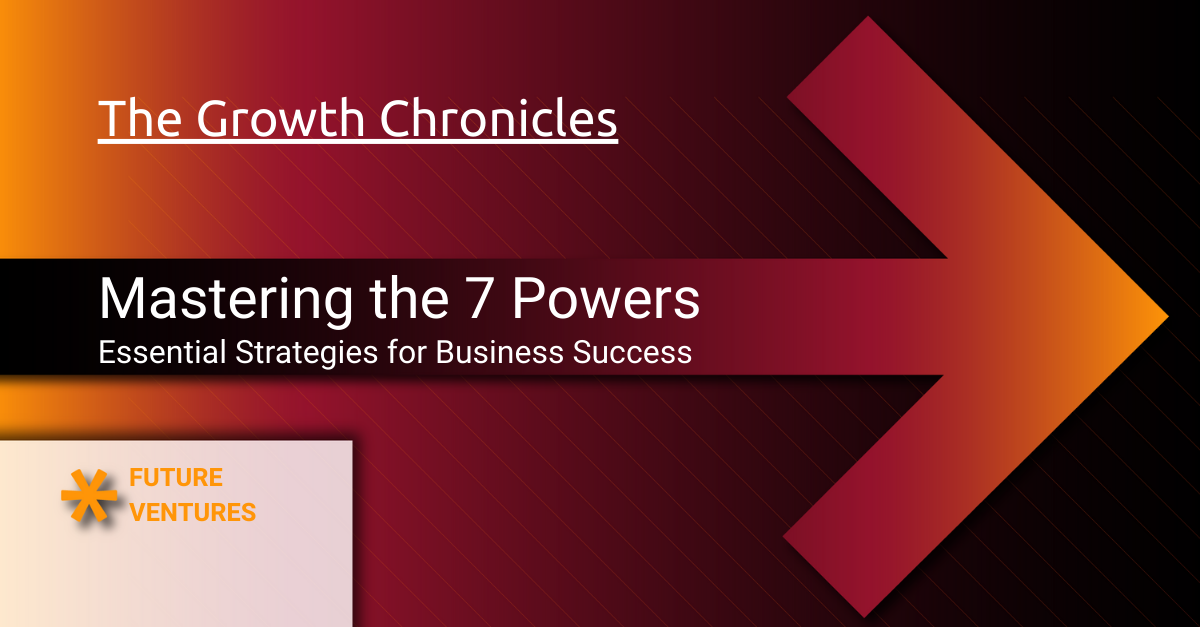Mastering Scaling Growth Essential Strategies for Business Success
Introduction: Why Scaling Growth Matters
Most founders think growth is the finish line. In reality, growth typically involves a steady climb in sales, manpower, and expenses. Growth is about increasing top-line revenues at any cost. Business growth refers to the process of expanding a company's operations, revenues, and market presence, but it often comes with challenges such as rising expenses and operational complexity.
Scaling is different. It’s about multiplying impact: achieving more output with the same or less input. The key difference between growth and scaling is that scaling focuses on increasing revenue with minimal additional costs, while growth often leads to higher expenses alongside increased revenue.
💡 Key Insight: Two-thirds of the fastest-growing companies fail, often due to a lack of sustainable scaling strategies. During rapid scaling, companies can lose sight of their core objectives, resulting in wasted resources and stalled progress. You should consider scaling when you have consistently increasing revenues for six months or more.
Think of it this way: growth is like running faster on a treadmill. Scaling is when you build the treadmill into a factory that runs itself. Growth generally signifies a company’s success but can lead to unsustainable models if not managed with scaling in mind. Scaling is about increasing revenues while minimizing costs, effectively improving profit margins. Effective scaling strategies aim to boost revenue without incurring significant additional costs, making growth more sustainable. Companies that learn to scale aren’t just bigger, they’re structurally better. Interestingly, slow-growing companies tend to perform better in the long run than fast-growing ones, as they often prioritize sustainable practices. Maintaining stable costs during expansion is crucial for long-term success. Retaining existing customers is often more cost-effective than acquiring new ones.
In this guide, you’ll learn:
- The difference between growth and scaling (and why mixing them up kills companies).
- How to design operating leverage - the holy grail of scaling.
- Actionable frameworks, scorecards, and a 90-day plan to start scaling today.
- Futurist insights: where scale will come from next (AI, ecosystems, pricing models).
A comprehensive business plan is essential to guide your strategic approach, ensuring your scaling and growth efforts are aligned with your business goals.
Growth vs. Scaling: Clear Definitions
| Concept | Growth | Scaling |
|---|---|---|
| Definition | Revenue and costs often increase at the same rate, meaning expenses rise proportionally with revenue. | Revenue increases faster than costs. |
| Fuel | Hiring, marketing spend, capital investment. | Automation, productization, network effects. |
| Marginal Cost | Stays flat or drops slightly. | Drops dramatically as volume rises. |
| Examples | Opening 10 new retail stores. | SaaS firm adding 10,000 users with two new engineers. |
| Key Metric | Topline revenue growth; increasing market share is often a primary goal. | Operating leverage (Revenue growth > Opex growth). |
💡Key Takeaway: Growth makes you bigger, often by increasing market share, while to scale a business effectively means expanding revenue and operations without costs rising at the same rate. Scaling makes you better.
The Foundation: Nail Unit Economics Before You Scale
Scaling amplifies whatever exists: good or bad. Before attempting to scale, it's crucial to understand your current resources and available resources, as limitations in these areas can restrict growth and impact your decisions. If your business bleeds cash per customer, scaling just builds a bigger hemorrhage. When a company adds more customers or resources without solid unit economics, it can quickly magnify losses and strain existing capacity.
Successful scaling yields higher profit margins compared to growth strategies, as scalable processes enable companies to deploy resources more efficiently. If done correctly, scaling can lead to more money for the business.
The Unit Economics Ladder:
- Gross Margin: 70%+ (SaaS) or 40–60%+ (services with productization).
- CAC Payback: < 12 months for B2B.
- LTV/CAC Ratio: 3:1 or better.
- Net Revenue Retention (NRR): 110%+ in recurring models.
- Operating Leverage: 4+ quarters of revenue growing faster than opex.
💡 Key Takeaway: If you’re not here yet, you don’t have a scaling problem—you have a unit economics problem. Fix that first.
Culture as the Operating System of Scaling
As you grow, complexity scales faster than headcount. Without culture, chaos eats efficiency. Embedding a strong company culture helps attract top talent as the business scales, and business leaders play a crucial role in guiding and maintaining that culture during periods of rapid growth.
When a company hires more employees, it can impact both the company culture and internal processes, making it essential to adapt and communicate its values clearly and effectively. Internal processes that aren’t designed to scale can become obstacles when a company grows rapidly. For a small business, scaling presents unique challenges in maintaining its culture and building systems that support growth without incurring excessive costs. Documentation of processes is crucial, as it enables others to follow them without requiring step-by-step guidance, thereby ensuring consistency and efficiency. Signs that indicate readiness to scale include when employees are unable to handle the workload due to being overwhelmed.
- Non-negotiables: Decision clarity (who decides, by when, with what data).
- Meeting hygiene (shorter, sharper, output-driven).
- Metrics literacy (everyone knows the score).
- Talent quality (hire for learning and ownership, not pedigree).
💡 Culture isn’t a poster on the wall. It’s the operating code that allows your company to run at 10x speed without burning down. As one of my CEOs used to say, "culture is the way that employees behave when you are not there and not watching".
Creating a Competitive Advantage in Scaling
In today’s competitive landscape, building a sustainable edge is essential for companies aiming to scale successfully. A true competitive advantage goes beyond simply offering a great product—it’s about creating a business that stands out in your target market and can adapt as it grows. Leading companies achieve this by leveraging technology, such as specialized software, to maximize efficiency and keep costs low, even as customer demand rises.
For scaling companies, especially in the financial services industry, aligning decision-making processes with market opportunities is critical. This means utilizing data-driven insights to inform strategic decisions and ensuring that business operations and marketing efforts are closely aligned and mutually reinforcing. By doing so, businesses can respond quickly to market shifts, capture new opportunities, and support growth without losing sight of their core mission.
Company culture also plays a pivotal role in creating a competitive advantage. Successful companies invest in onboarding new hires who embody their values, ensuring that as the company grows, its brand recognition and customer base remain strong and resilient. This cultural consistency helps drive higher profits and increases revenue by fostering loyalty, both internally and externally.
Ultimately, companies that focus on these key aspects—leveraging technology, fostering a strong company culture, and aligning operations with market opportunities—are best positioned for rapid growth, higher profit margins, and long-term success.
Scaling Strategies: Demand × Delivery
Demand-Side: Create Pull
- Positioning: Own a sharp, narrow promise.
- Pricing: Usage-based, tiered, land-and-expand.
- Product-Led Growth (PLG): Free trials, viral invites, in-product nudges.
- Partnerships: Channels, marketplaces, OEM plays.
- Media Machine: Own the conversation, not just ads.
Delivery-Side: Fulfill Profitably
- Productize services: Standardized offers, fixed-scope packages.
- Automate: If it happens twice, script it. Automation programs can offer efficient data processing at minimal cost, allowing revenue increase without additional investments.
- Platforms: APIs and integrations multiply reach.
- Data backbone: Customer truth in one place.
- Quality control: Checklists, SLAs, automated alerts.
- Technology investment: Automation and technology can support the scaling of business operations. Outsourcing non-core tasks can also free up internal resources to focus on growth activities.
Scaling is solving today’s bottleneck before it breaks tomorrow. Companies need to conduct regular risk assessments during the scaling process to identify potential challenges.
Building Scalable Infrastructure
To scale, you need an infrastructure that can bend without breaking. Developing sustainable processes and strategies is crucial for handling increased demand more efficiently. Building scalable infrastructure is crucial for sustainable expansion, ensuring long-term growth without sacrificing future stability.
Effective scaling helps a company manage increased demand efficiently without a substantial increase in resources.
- Cloud-native core (elastic compute, managed services).
- AI in the loop (triage, summarization, support deflection).
- Observability (dashboards for throughput, latency, errors).
- Security by design (least privilege, encryption, audit trails).
- Flexible systems that adapt as markets shift. Relying on software that scales easily is crucial for supporting effective growth. Infrastructure should be tailored to your company's specific needs, resources, and goals.
- Adopting new technology is crucial for scaling, as it enables teams to adapt to emerging tools and programs that drive revenue and efficiency.
Scaling with Technology
Technology is the backbone of modern business scaling. By leveraging technology, companies can achieve exponential growth, increase revenue, and support growth without a corresponding spike in costs. Cloud computing, automation, and specialized SaaS platforms allow businesses to maximize efficiency, streamline operations, and quickly adapt to changing market conditions.
SaaS companies are prime examples of how technology can drive successful scaling. Their ability to serve a growing customer base with minimal additional resources demonstrates the power of scalable infrastructure and a strong product-market fit. For businesses looking to scale, investing in the right technology, whether it’s upgrading current systems or adopting new tools, can open doors to new markets, attract more customers, and generate higher revenue.
As companies scale, they often need to hire new employees or invest in additional resources to support their growth. However, the key is to do so strategically, ensuring that each addition increases efficiency and contributes to higher revenue. By focusing on scalable solutions, businesses can expand their reach, enter new markets, and achieve sustainable, successful scaling.
Identifying Market Opportunities
You don’t just scale any demand. You scale the right demand. Ensure your core promise to customers is clear and compelling, allowing you to expand without reinventing your offering.
- Focus on serviceable, reachable markets (not just theoretical Total Addressable Market (TAM)).
- Map jobs-to-be-done: high-frequency, high-pain, budget-backed jobs.
- Look for timing edges: regulatory shifts, tech inflection points, and category fatigue.
- Watch for signals: faster referrals, rising inbound, and partner pull.
- Identify key expansion opportunities by analyzing customer needs and industry trends. Listening to customer feedback can reveal unmet needs and new market opportunities for scaling. As you identify and act on these opportunities, your business grows by meeting unmet customer needs and pursuing sustainable expansion.
Measuring Scaling: The Scale Scorecard
You can’t scale what you don’t measure. Track efficiency and leverage, not just top-line growth. Regularly tracking financial health ensures that a business can support scaling efforts sustainably. The cost-effectiveness of scaling can allow companies to focus on more effective growth strategies. Leverage data to track key performance indicators (KPIs) and identify trends in customer behaviour, which can guide strategic decisions during scaling. A healthy cash flow is essential before considering business scaling.
👉 Download the Scaling Scorecard template now and take the first step toward mastering your business's growth. Use it to measure your progress, identify opportunities, and make data-driven decisions that accelerate your scaling journey. Don’t wait. Start scaling smarter today!
The Seven Stages of Growth → Scale
- Discover – Insight, founder-market fit.
- Validate – MVP, early payers.
- Product–Market Fit – Retention and referrals.
- Go-to-Market Fit – Repeatable pipeline.
- Scale-Up – Operating leverage emerges. To successfully scale, a startup should build a scalable product and repeatable sales processes.
- Expansion – New segments/geos/products. Expanding into new markets requires thorough market research to understand new market dynamics.
- Durability – Moats, reinvention. Understanding your business's current position, whether in growth or scaling, is vital for strategic planning.
Function-by-Function Scaling
- Sales: From founder-led to playbook-led. Specialization (SDR, AE, CSM). Forecasting discipline.
- Marketing: Own a problem, not a product. Multi-channel engine. Optimize for CAC payback, not vanity metrics.
- Product: Usage-driven roadmaps. Extensibility. Reliability as a strategy.
- Finance: Contribution margin focus. Capacity planning. Capital strategy (debt vs equity).
- People: Clear swimlanes. Management training. Performance systems. Employees need autonomy while managers maintain control to ensure effective scaling in larger teams. Hire strategically by seeking experienced, adaptable individuals who align with your company culture.
Overcoming Scaling Challenges
Scaling a business is never without its hurdles. As companies grow, maintaining a strong company culture becomes increasingly challenging, especially as new hires join the team. Ensuring that every employee understands and embodies the company’s values is essential for preserving the integrity and performance of the business.
Another common challenge is managing the increased workload that comes with growth. Businesses must ensure their current team is equipped to handle new demands, which often means implementing scalable processes and systems. By adopting specialized software and optimizing business operations, companies can streamline routine tasks, reduce manual effort, and free up resources to focus on strategic growth initiatives.
Marketing efforts also need to evolve as the business scales. Monitoring key performance indicators (KPIs) and making data-driven strategic decisions help identify bottlenecks and areas for improvement. This proactive approach supports growth, drives higher profit margins, and ensures that increasing revenue doesn’t come at the expense of efficiency or company culture.
Ultimately, overcoming scaling challenges requires a commitment to continuous improvement, investment in scalable processes, and a focus on aligning the entire organization, from business operations to marketing and new hires, around the company’s growth objectives. By doing so, businesses can support growth, increase profitability, and achieve long-term success.
Concrete Examples of Scaling
- SaaS onboarding 1,000 customers with only two new reps (self-serve + AI).
- A consulting firm turning audits into productized packages.
- A marketplace compounding buyers/sellers through network effects.
Futurist Lens: Where Scale Will Come From
- Agentic AI in workflows: AI agents in sales, support, and finance.
- Usage-based monetization: Aligns value with consumption.
- APIs as distribution: Ecosystems > isolation.
- Global talent fabrics: Distributed specialists on demand.
- Trust as moat: Privacy, provenance, governance.
Your 90-Day Scaling Sprint
- Weeks 1–2: Benchmark unit economics, define ICP, map core journey.
- Weeks 3–4: Productize one offer, write playbooks, and instrument analytics.
- Weeks 5–8: Automate top 3 manual steps, launch self-serve onboarding.
- Weeks 9–12: Specialize sales roles, implement dashboard, upgrade decision hygiene.
👉 Download the 90-Day Scaling Sprint template now and start transforming your business today!
Template: The Scale Scorecard
| Dimension | Metric | Target | Current | Trend | Notes/Actions |
|---|---|---|---|---|---|
| Demand | Pipeline coverage (next 2Q) | 3–5× | |||
| Monetization | Net Revenue Retention (NRR) | 110–130%+ | |||
| Efficiency | CAC Payback | < 12 mo. | |||
| Profitability | Gross Margin | 60–85%+ | |||
| Leverage | Rev growth – Opex growth | ≥ +10 pts | |||
| Retention | Logo/Revenue churn | < 8% annually | |||
| Velocity | Lead → Win cycle | Falling trend | |||
| Quality | NPS/CSAT | ↑ with volume |
Template: 90-Day Scaling Plan
| Week(s) | Focus Area | Key Actions | Owner(s) | KPI |
|---|---|---|---|---|
| 1-2 | Baseline | Audit unit economics, define ICP, map Lead→Live→Value journey | CEO + Finance Lead | CAC, LTV/CAC |
| 3-4 | Productization | Launch 1 productized offer, build a delivery playbook, and add analytics | Ops + Product | Gross Margin, Time-to-Value |
| 5-8 | Automation | Automate top 3 manual processes, ship self-serve onboarding, launch 1 partner motion | Ops + Tech | Efficiency ratio, Churn |
| 9-12 | Specialization | Hire/enable specialized sales roles, roll out a weekly dashboard, and reduce low-value meetings | Sales + Exec | Pipeline coverage, Opex/Rev delta |










